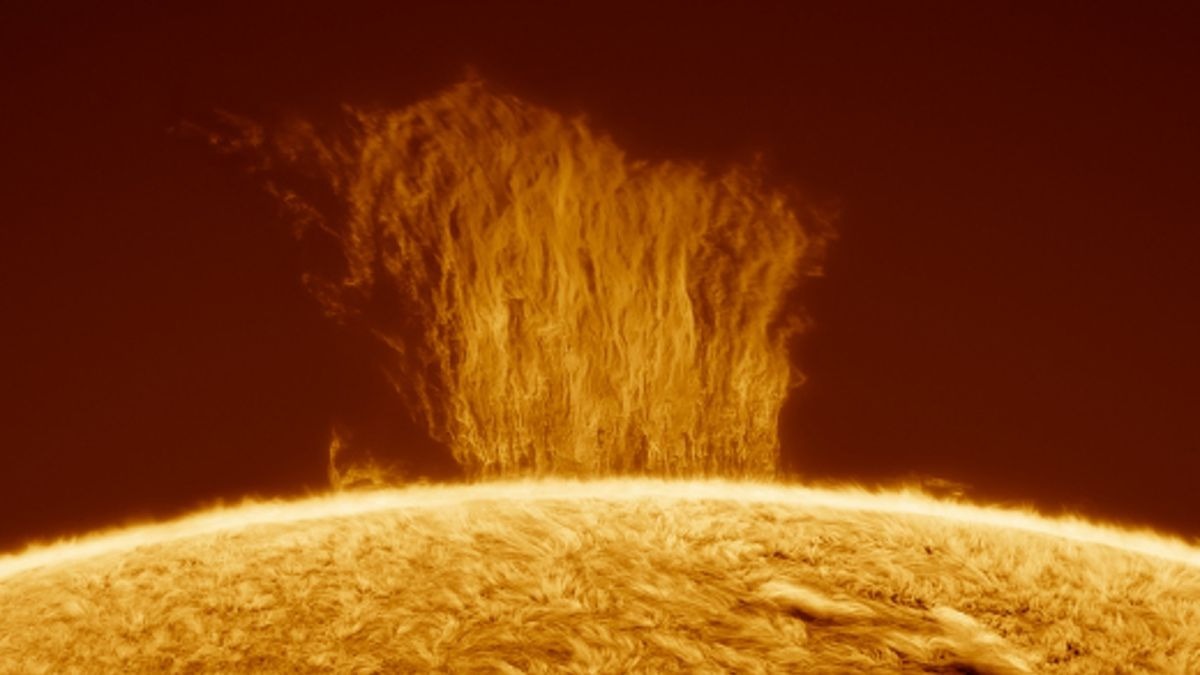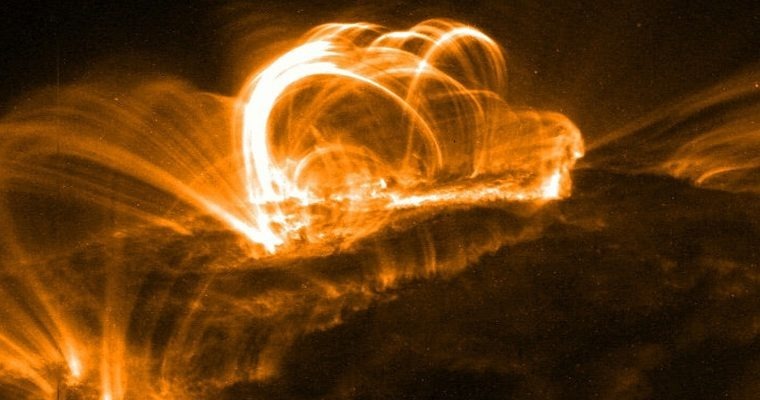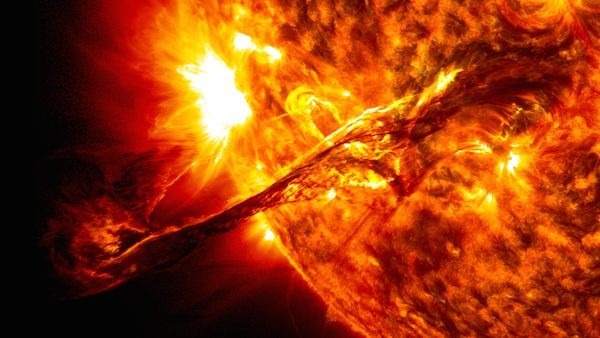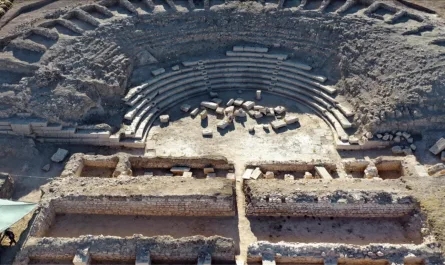A mᴀssive wall of falling plasma, known as a polar crown prominence, was recently captured in a stunningly-detailed new pH๏τo of the sun.

A close-up image of an enormous wall of falling plasma, known as a polar crown prominence, above the solar surface on March 9. (Image credit: Eduardo Schaberger Poupeau)
An astropH๏τographer has snapped a stunning sH๏τ of an enormous wall of plasma falling down toward the solar surface at impossibly fast speeds after being spat out near the sun’s south pole.
Eduardo Schaberger Poupeau(opens in new tab), who is based near Rafaela in Argentina, captured the striking image(opens in new tab) on March 9 using specialized camera equipment. The plasma wall “rose some 100,000 km [kilometers, or 62,000 miles] above the solar surface,” Poupeau told Spaceweather.com(opens in new tab). For context, that is as tall as around eight Earths stacked on top of one another. “On my computer screen, it looked like hundreds of threads of plasma were dripping down a wall,” Poupeau added.
The dazzling phenomenon is known as a polar crown prominence (PCP), according to Spaceweather.com. PCPs are similar to normal solar prominences, which are loops of plasma, or ionized gas, that are ejected from the solar surface by magnetic fields. However, PCPs occur near the sun’s magnetic poles at laтιтudes between 60 and 70 degrees North and South, which often causes them to collapse back towards the sun because the magnetic fields near the poles are much stronger, according to NASA(opens in new tab). This collapse back to the sun has earned them the nickname “plasma waterfalls.”

An image of the sun captured March 10 by NASA’s Solar Dynamics Observatory. The PCP is circled in the image. (Image credit: NASA/SDO)
The plasma within PCPs is not actually in freefall because it is still contained within the magnetic field that initially spat them out. However, the plasma travels downwards at speeds of up to 22,370 mph (36,000 km/h), which is much faster than the magnetic fields should allow based on experts’ calculations, according to NASA. Researchers are still trying to figure out how this is possible.

A study published in 2021 in the journal Frontiers in Physics(opens in new tab) revealed that PCPs undergo two phases during their eruptions: a slow phase, where plasma slowly shoots upward, and a fast phase, where plasma accelerates towards its alтιтude peak. It is possible that this may affect how the plasma falls back to the surface, but more research is needed to tell for sure.

Solar physicists often study solar prominences because they can be accompanied by coronal mᴀss ejections, or mᴀssive magnetized plasma plumes that can fully break away from the sun and slam into Earth. But PCPs are also of interest to nuclear physicists because the sun’s magnetic field seems to be particularly adept at containing the plasma loops in the polar regions, which could provide insights that help researchers improve experimental nuclear fusion reactors.
PCPs are very common and could happen almost every day, although images of the phenomenon like the one Poupeau captured are rare, according to NASA. However, like many other plasma-related solar phenomena, PCPs could become even more frequent and intense as the sun ramps up to a peak in its 11-year solar cycle known as the solar maximum.
On Feb. 2, a mᴀssive solar prominence, just below the laтιтude needed to be deemed a PCP, broke off from the sun and became trapped in an enormous and fast-moving polar vortex around the sun’s north pole for about 8 hours. On Sept. 5, 2022, an enormous, undulating stream of plasma sH๏τ across the solar surface like a snake, and on Sept. 24, 2022, a colossal 1-million-mile long plume of plasma erupted from the sun’s surface after another prominence snapped in half.





